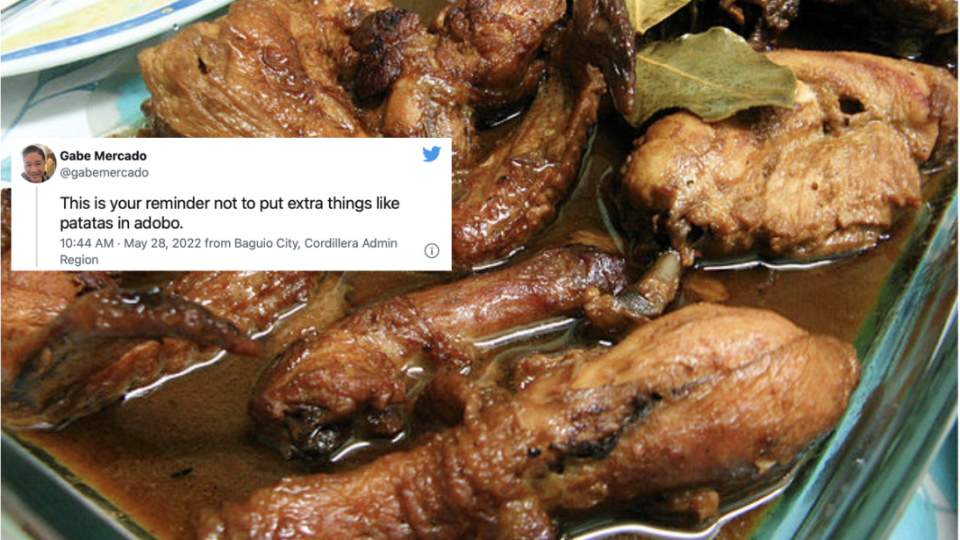There are just some family recipes one doesn’t mess with, and that includes adobo. Just about every Filipino household claims that their adobo is the best — which is why actor and director Gabe Mercado may have ruffled a few feathers with his hot take on what is arguably the Philippines’ national dish (also a hot take — sinigang lovers, anyone?).
Over the weekend, the Third World Improv founder boldly tweeted, “This is your reminder not to put extra things like patatas (potatoes) in adobo.”
It seems that Mercado feels strongly about not having potatoes in his adobo as he also jokingly challenged those who disagreed to a fistfight.
Yet several defended putting potatoes in their adobo, with some admitting that Gabe’s reaction was the first time they had heard that potatoes were not one of the main ingredients in a classic adobo.
Others brought up more arguably unconventional ingredients such as raisins, eggplants, and bananas.
The actor’s post also spurred some incendiary reactions from those who argued that potatoes (and in some cases, boiled eggs) were ways of increasing the dish’s serving size without having to spend extra money on meat, which can be expensive for some households.
Should potatoes go in adobo? Although adobo is derived from the Spanish word adobar, which means “to marinate,” Filipino adobo is different from the Spanish and Latin American iterations, the latter of which may include olive oil, thyme, laurel leaf, oregano, paprika, and salt.
Contrary to popular belief, Filipino adobo is a purely indigenous dish — our ancestors were braising chicken or pork in vinegar to preserve and flavor them long before the arrival of the Spaniards, who later recognized the locals’ cooking technique as adobo. Chinese traders later introduced soy sauce to Filipino cuisine and eventually it found its way into the adobo dish we all know today.
In Mercado’s case, he was likely referring to the classic adobo, a highly savory, sour, and salty dish that usually consists of pork or chicken (or both) stewed in soy sauce, vinegar, peppercorns, garlic, and dried bay leaves.
That said, there is no single way to prepare adobo, as various regions in the Philippines and even households prepare the dish quite differently. There are versions in which elements such as coconut milk or mashed pork liver are used instead of soy sauce and those in which the main protein may be beef, duck, quail, seafood, fish, or even frogs or insects. Other vegetables and crops may also be included in the mix such as bamboo shoots, banana blossoms, water spinach, eggplant, and yes — even potatoes.
So should you add potatoes to your adobo? We only have one answer: if you want to.




